Gallery
Image Type
Morphological Structure
Clades
Phytophthora spp. in subclade 1c: portion of the seven-loci ML phylogeny featuring the type cultures of 212 described species (by T. Bourret). Notice the position of P. mirabilis Ex-type CBS 678.85 = S&T BL 25. Gloria Abad, USDA S&T.
Phytophthora spp. in subclade 1c: Morphological Tabular key (PDF) and Tabular key legends (PDF) in IDphy2 KEY SECTION. Notice the data of P. mirabilis Ex-type CBS 678.85 = S&T BL 25. Gloria Abad, USDA S&T.
Phytophthora spp. in subclade 6b: portion of the seven-loci ML phylogeny featuring the type cultures of 212 described species (by T. Bourret). Notice the position of P. mississippiae Ex-type NRRL 64167 = S&T BL 126. Gloria Abad, USDA S&T.
Phytophthora spp. in subclade 6b: Morphological Tabular key (PDF) and Tabular key legends (PDF) in IDphy2 KEY SECTION. Notice the data of P. mississippiae Ex-type NRRL 64167 = S&T BL 126. Gloria Abad, USDA S&T.
 Phytophthora mississippiae (CPHST BL 126) colonies of the ex-type grown for 7 days on (a) V8reg; Agar, (b) potato dextrose agar, and (c) malt extract agar; photo by Krysta Jennings and Leandra Knight, USDA-APHIS-PPQ
Phytophthora mississippiae (CPHST BL 126) colonies of the ex-type grown for 7 days on (a) V8reg; Agar, (b) potato dextrose agar, and (c) malt extract agar; photo by Krysta Jennings and Leandra Knight, USDA-APHIS-PPQ
Phytophthora mississippiae (CPHST BL 126) colonies of the ex-type grown for 7 days on (a) V8® Agar, (b) potato dextrose agar, and (c) malt extract agar; photo by Krysta Jennings and Leandra Knight, USDA-APHIS-PPQ
Phytophthora spp. in subclade 10a: portion of the seven-loci ML phylogeny featuring the type cultures of 212 described species (by T. Bourret). Notice the position of P. morindae Ex-type CBS 121982 = S&T BL 49G. Gloria Abad, USDA S&T.
Phytophthora spp. in subclade 10a: Morphological Tabular key (PDF) and Tabular key legends (PDF) in IDphy2 KEY SECTION. Notice the data of P. morindae Ex-type CBS 121982 = S&T BL 49G. Gloria Abad, USDA S&T.
 Phytophthora morindae (CPHST BL 49G) colonies of the ex-type grown for 7 days on (a) V8reg; Agar, (b) potato dextrose agar, and (c) malt extract agar; photo by Krysta Jennings and Leandra Knight, USDA-APHIS-PPQ
Phytophthora morindae (CPHST BL 49G) colonies of the ex-type grown for 7 days on (a) V8reg; Agar, (b) potato dextrose agar, and (c) malt extract agar; photo by Krysta Jennings and Leandra Knight, USDA-APHIS-PPQ
Phytophthora morindae (CPHST BL 49G) colonies of the ex-type grown for 7 days on (a) V8® Agar, (b) potato dextrose agar, and (c) malt extract agar; photo by Krysta Jennings and Leandra Knight, USDA-APHIS-PPQ
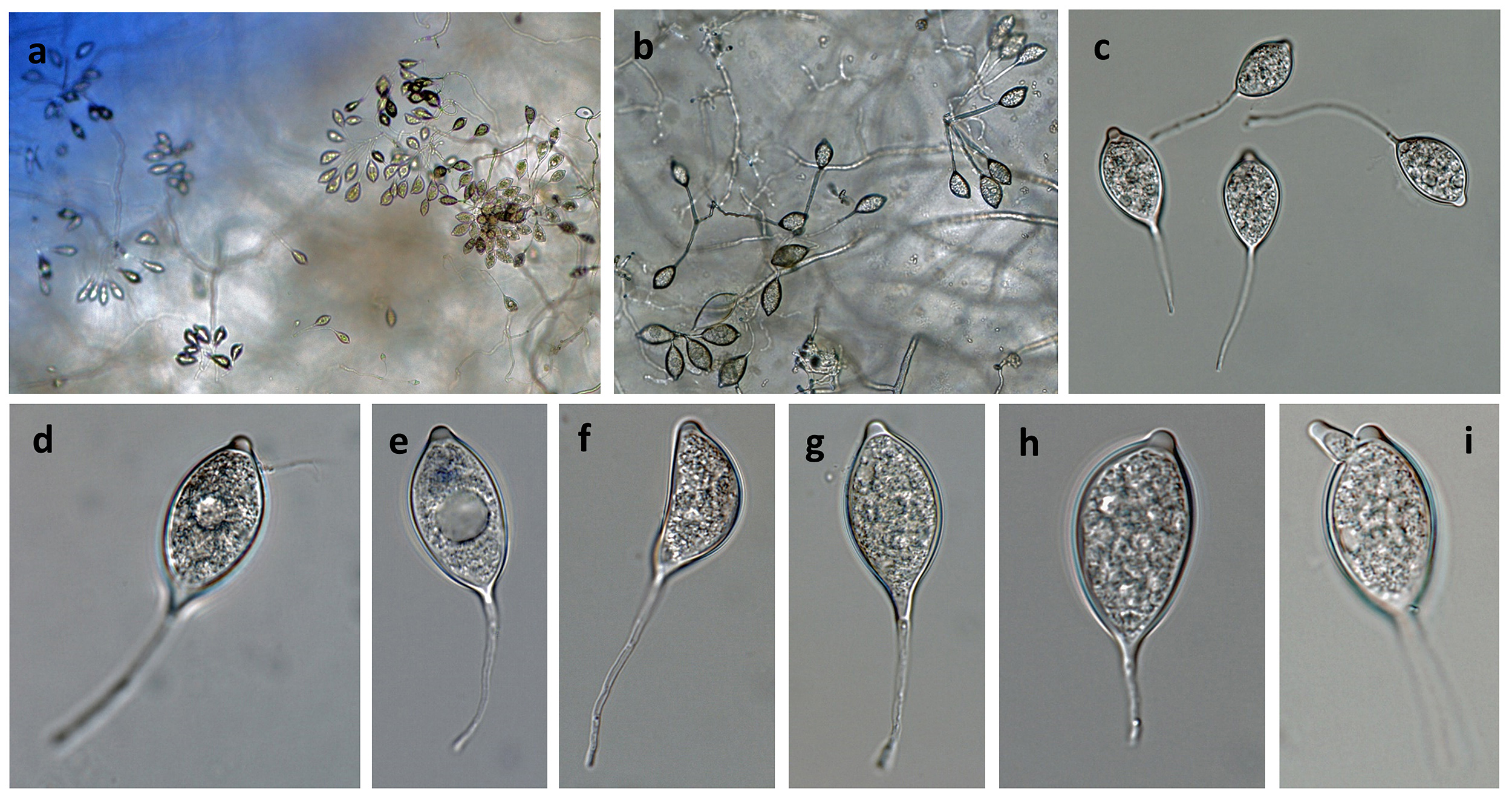 Phytophthora morindae nbsp;(CPHST BL 49G, ex-type) asexual phase (andash;i): sporangia produced in umbella type sporangiophores (a, b), sporangia papillated (cndash;i), caducous with short to medium pedicels (cndash;h), sometimes with two papilla (i); photos by Gloria Abad, USDA-APHIS-PPQ.
Phytophthora morindae nbsp;(CPHST BL 49G, ex-type) asexual phase (andash;i): sporangia produced in umbella type sporangiophores (a, b), sporangia papillated (cndash;i), caducous with short to medium pedicels (cndash;h), sometimes with two papilla (i); photos by Gloria Abad, USDA-APHIS-PPQ.
Phytophthora morindae (CPHST BL 49G, ex-type) asexual phase (a–i): sporangia produced in umbella type sporangiophores (a, b), sporangia papillated (c–i), caducous with short to medium pedicels (c–h), sometimes with two papilla (i); photos by Gloria Abad, USDA-APHIS-PPQ.
 Phytophthora morindae nbsp;(CPHST BL 49G, ex-type) sexual phase (andash;e): oogonia with tapered base (bndash;e), amphigynous antheridia (andash;e), plerotic oospores (andash;e), thick-walled when young (bndash;e); photos by Gloria Abad, USDA-APHIS-PPQ.
Phytophthora morindae nbsp;(CPHST BL 49G, ex-type) sexual phase (andash;e): oogonia with tapered base (bndash;e), amphigynous antheridia (andash;e), plerotic oospores (andash;e), thick-walled when young (bndash;e); photos by Gloria Abad, USDA-APHIS-PPQ.
Phytophthora morindae (CPHST BL 49G, ex-type) sexual phase (a–e): oogonia with tapered base (b–e), amphigynous antheridia (a–e), plerotic oospores (a–e), thick-walled when young (b–e); photos by Gloria Abad, USDA-APHIS-PPQ.
Orchard-wide symptoms of black flag disease of noni (Morinda citrifolia) caused by Phytophthora morindae; photo by Scot Nelson, University of Hawaii at Manoa
Leaf symptoms of black flag disease of noni (Morinda citrifolia) caused by Phytophthora morindae; photo by Scot Nelson, University of Hawaii at Manoa
Leaf symptoms of black flag disease of noni (Morinda citrifolia) caused by Phytophthora morindae; photo by Scot Nelson, University of Hawaii at Manoa
Fruit mummy symptoms of black flag disease of noni (Morinda citrifolia) caused by Phytophthora morindae; photo by Scot Nelson, University of Hawaii at Manoa
Symptoms of black flag disease of noni (Morinda citrifolia) caused by Phytophthora morindae; photo by Scot Nelson, University of Hawaii at Manoa
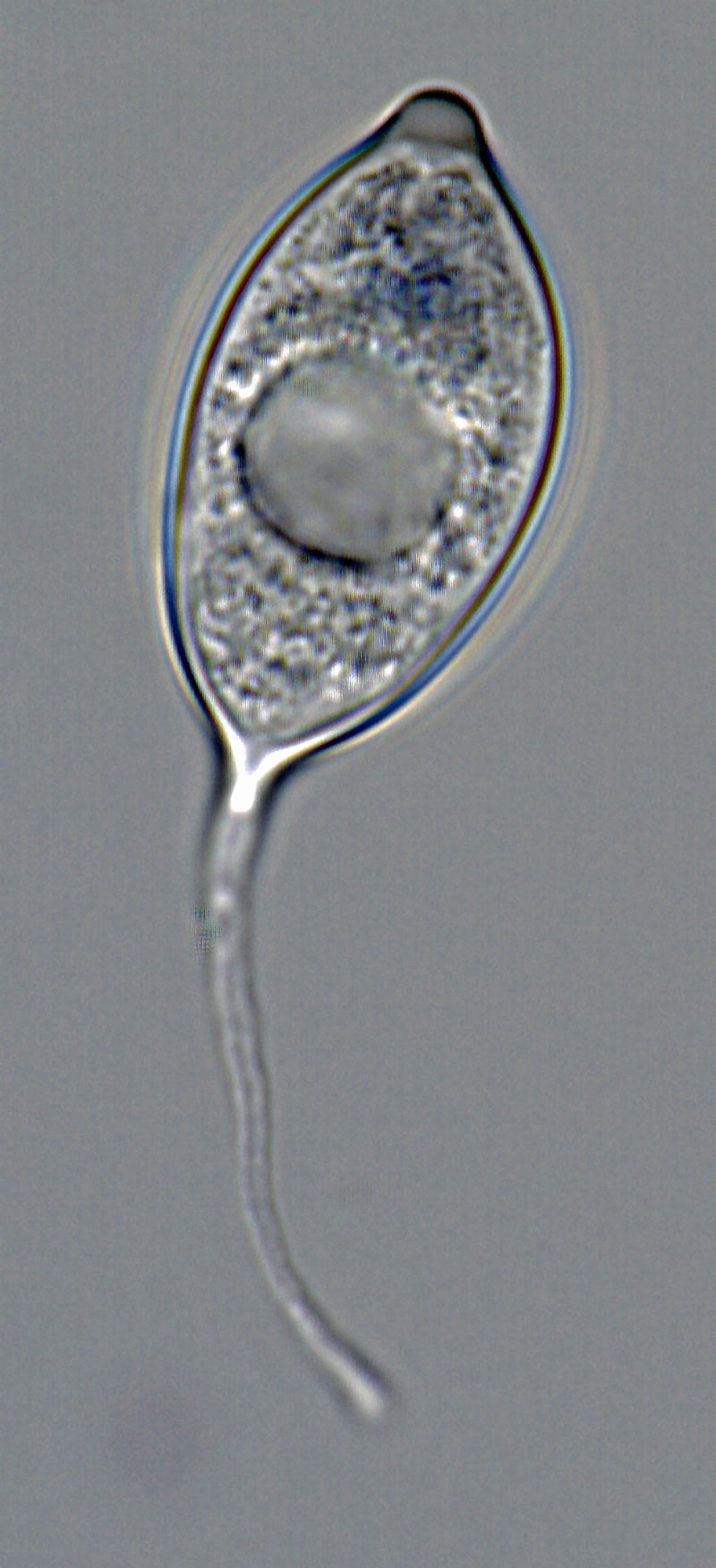 Phytophthora morindae (CPHST BL 49G, ex-type) asexual phase: caducous papillate sporangium with medium pedicel; photo by Gloria Abad, USDA-APHIS-PPQ.
Phytophthora morindae (CPHST BL 49G, ex-type) asexual phase: caducous papillate sporangium with medium pedicel; photo by Gloria Abad, USDA-APHIS-PPQ.
Phytophthora morindae (CPHST BL 49G, ex-type) asexual phase: caducous papillate sporangium with medium pedicel; photo by Gloria Abad, USDA-APHIS-PPQ.
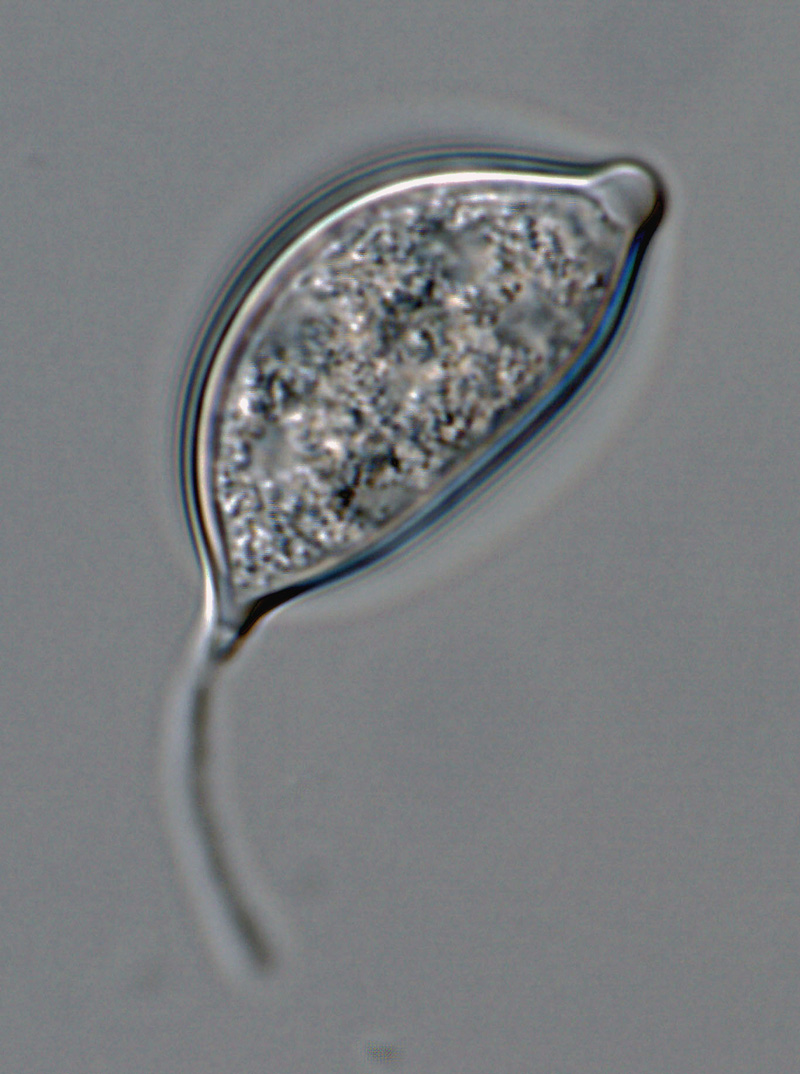 Phytophthora morindae (CPHST BL 49G, ex-type) asexual phase: caducous papillate sporangium with medium pedicel; photo by Gloria Abad, USDA-APHIS-PPQ.
Phytophthora morindae (CPHST BL 49G, ex-type) asexual phase: caducous papillate sporangium with medium pedicel; photo by Gloria Abad, USDA-APHIS-PPQ.
Phytophthora morindae (CPHST BL 49G, ex-type) asexual phase: caducous papillate sporangium with medium pedicel; photo by Gloria Abad, USDA-APHIS-PPQ.
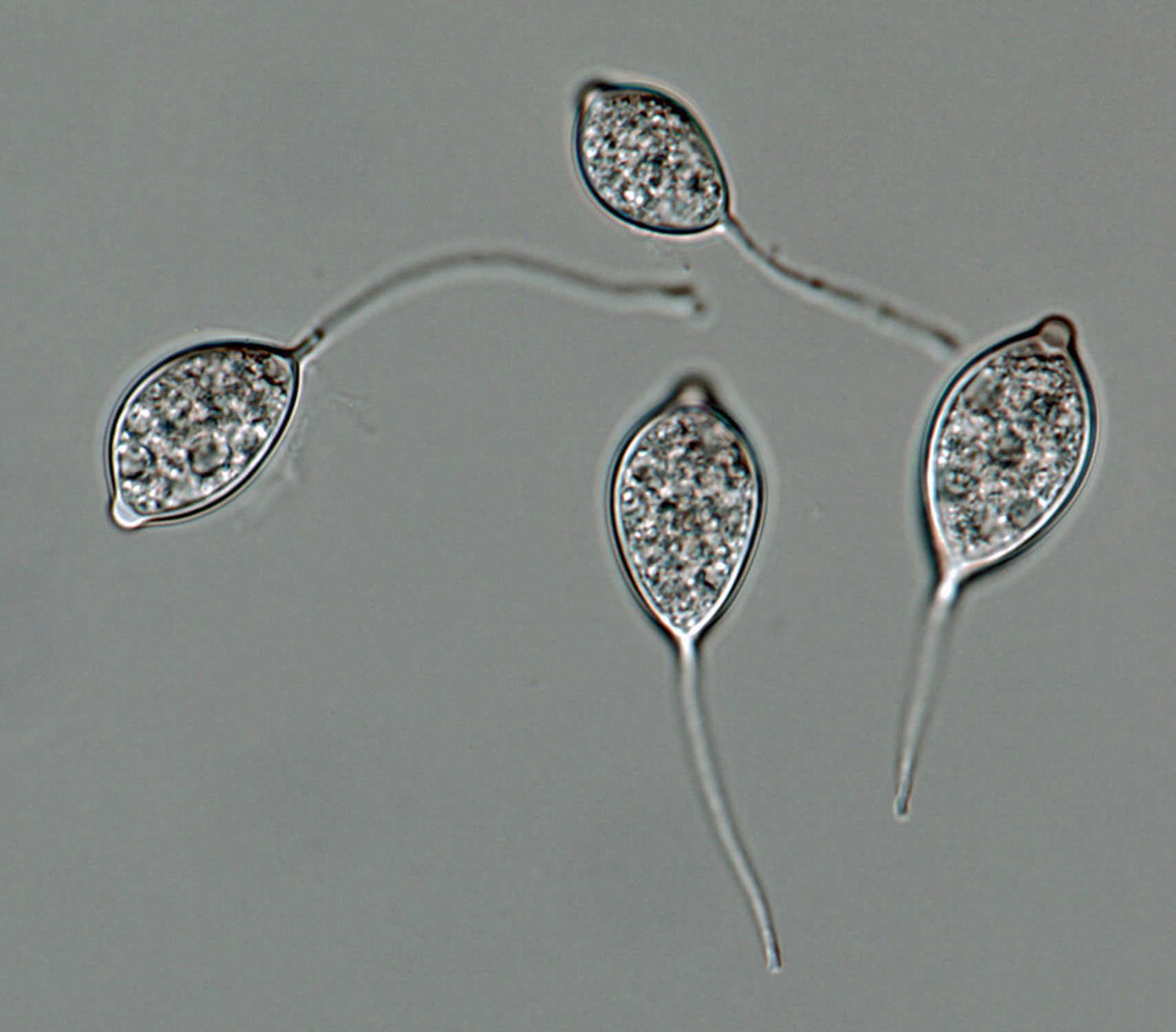 Phytophthora morindae (CPHST BL 49G, ex-type) asexual phase: caducous papillate sporangianbsp;with medium pedicels; photo by Gloria Abad, USDA-APHIS-PPQ.
Phytophthora morindae (CPHST BL 49G, ex-type) asexual phase: caducous papillate sporangianbsp;with medium pedicels; photo by Gloria Abad, USDA-APHIS-PPQ.
Phytophthora morindae (CPHST BL 49G, ex-type) asexual phase: caducous papillate sporangia with medium pedicels; photo by Gloria Abad, USDA-APHIS-PPQ.
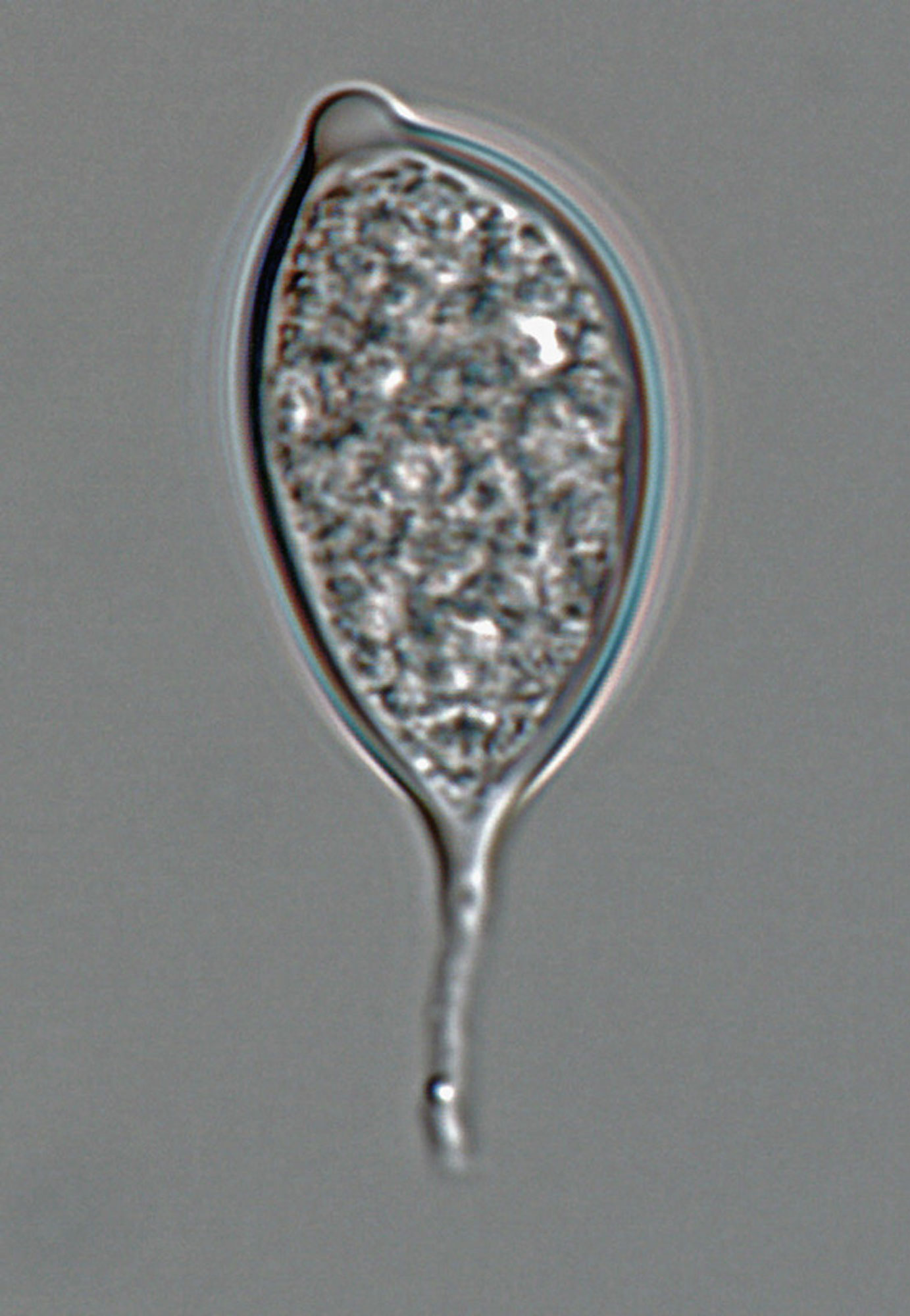 Phytophthora morindae (CPHST BL 49G, ex-type) asexual phase: caducous papillate sporangium with short pedicel; photo by Gloria Abad, USDA-APHIS-PPQ.
Phytophthora morindae (CPHST BL 49G, ex-type) asexual phase: caducous papillate sporangium with short pedicel; photo by Gloria Abad, USDA-APHIS-PPQ.
Phytophthora morindae (CPHST BL 49G, ex-type) asexual phase: caducous papillate sporangium with short pedicel; photo by Gloria Abad, USDA-APHIS-PPQ.
 Phytophthora morindae (CPHST BL 49G, ex-type) asexual phase: sporangia produced in umbella type sporangiophores, sporangia papillated; photo by Gloria Abad, USDA-APHIS-PPQ.
Phytophthora morindae (CPHST BL 49G, ex-type) asexual phase: sporangia produced in umbella type sporangiophores, sporangia papillated; photo by Gloria Abad, USDA-APHIS-PPQ.
Phytophthora morindae (CPHST BL 49G, ex-type) asexual phase: sporangia produced in umbella type sporangiophores, sporangia papillated; photo by Gloria Abad, USDA-APHIS-PPQ.
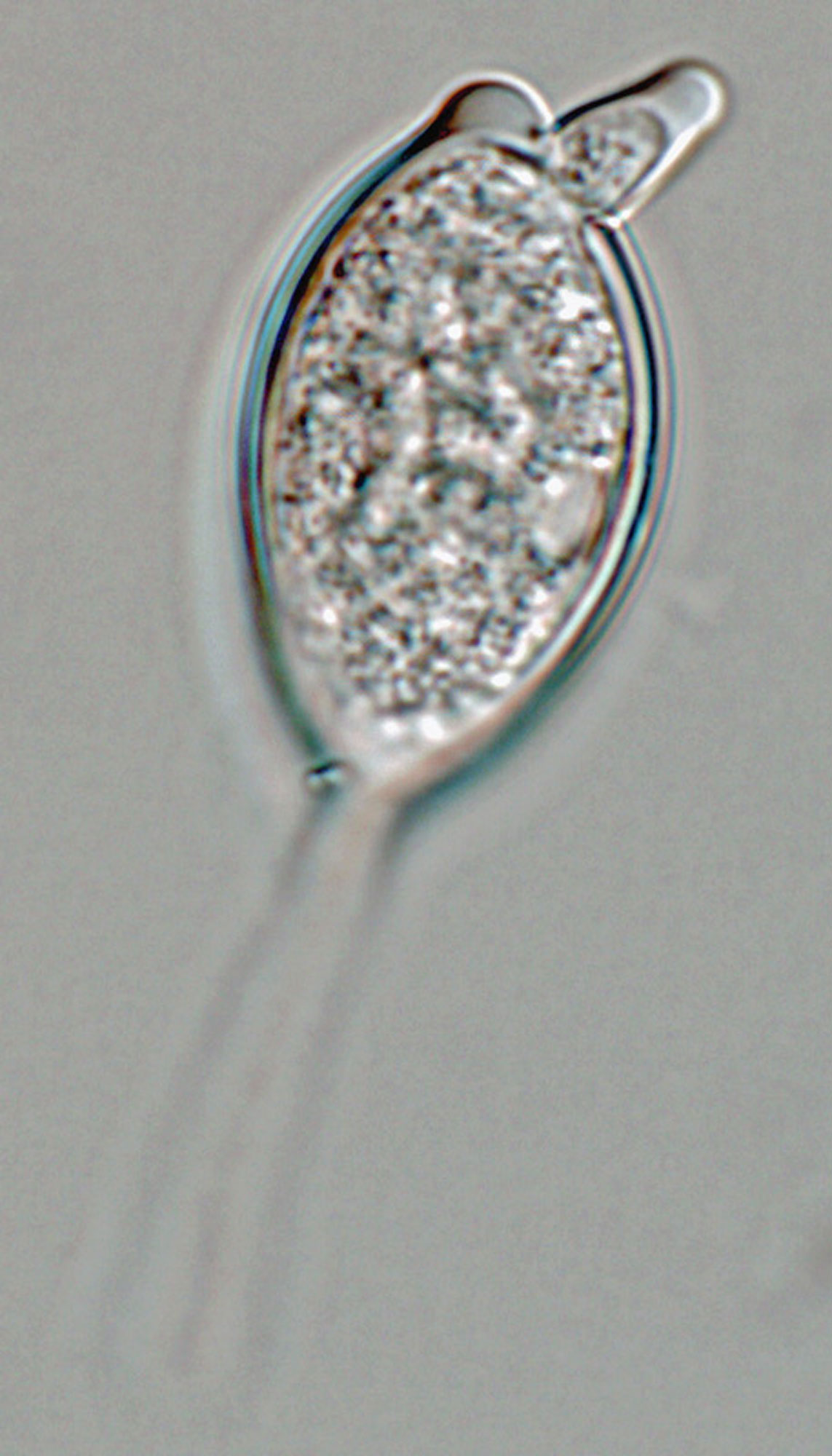 Phytophthora morindae (CPHST BL 49G, ex-type) asexual phase: caducous bipapillate sporangium with medium pedicel; photo by Gloria Abad, USDA-APHIS-PPQ.
Phytophthora morindae (CPHST BL 49G, ex-type) asexual phase: caducous bipapillate sporangium with medium pedicel; photo by Gloria Abad, USDA-APHIS-PPQ.
Phytophthora morindae (CPHST BL 49G, ex-type) asexual phase: caducous bipapillate sporangium with medium pedicel; photo by Gloria Abad, USDA-APHIS-PPQ.
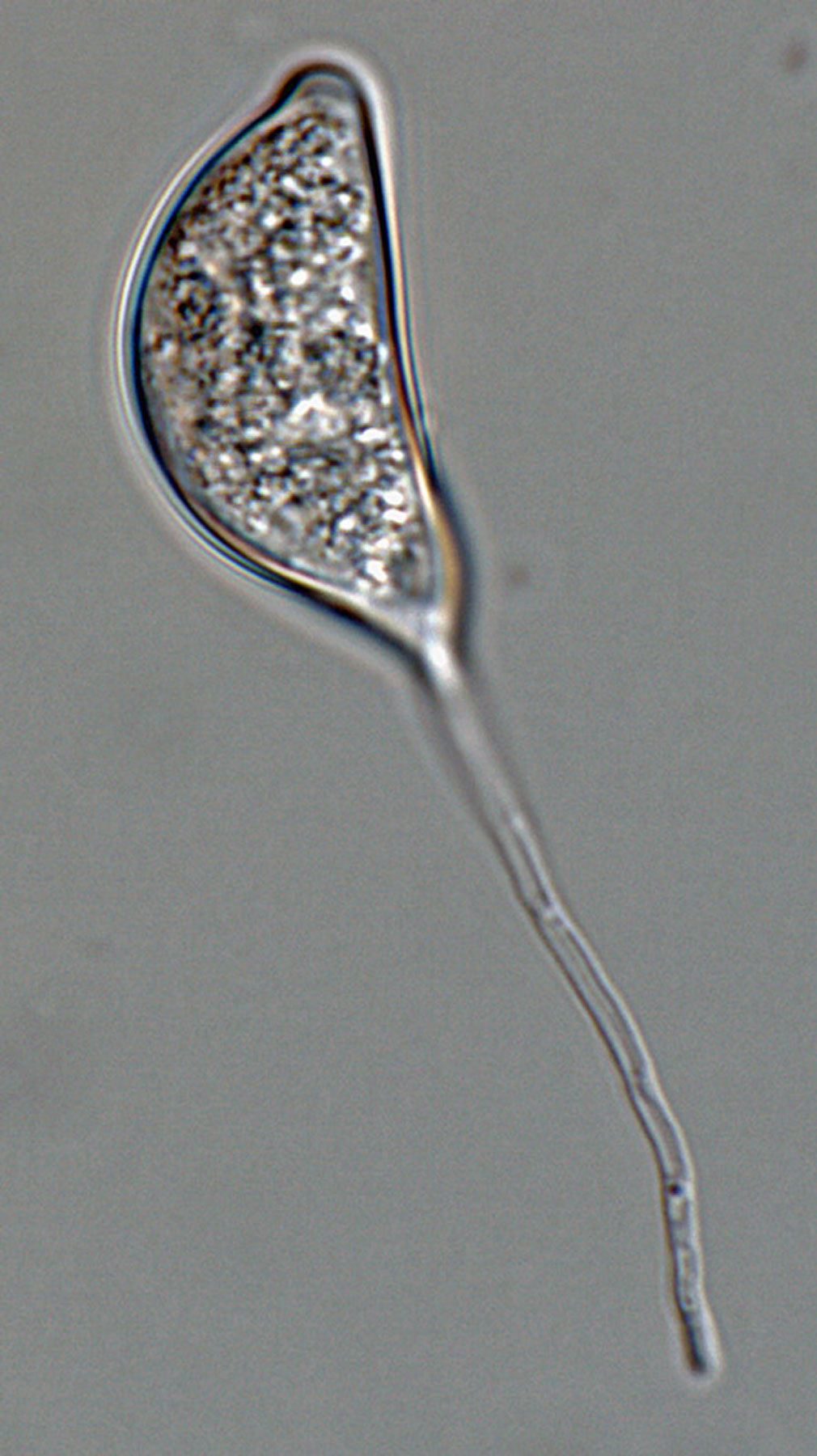 Phytophthora morindae (CPHST BL 49G, ex-type) asexual phase: caducous papillate sporangium with medium pedicel; photo by Gloria Abad, USDA-APHIS-PPQ.
Phytophthora morindae (CPHST BL 49G, ex-type) asexual phase: caducous papillate sporangium with medium pedicel; photo by Gloria Abad, USDA-APHIS-PPQ.
Phytophthora morindae (CPHST BL 49G, ex-type) asexual phase: caducous papillate sporangium with medium pedicel; photo by Gloria Abad, USDA-APHIS-PPQ.
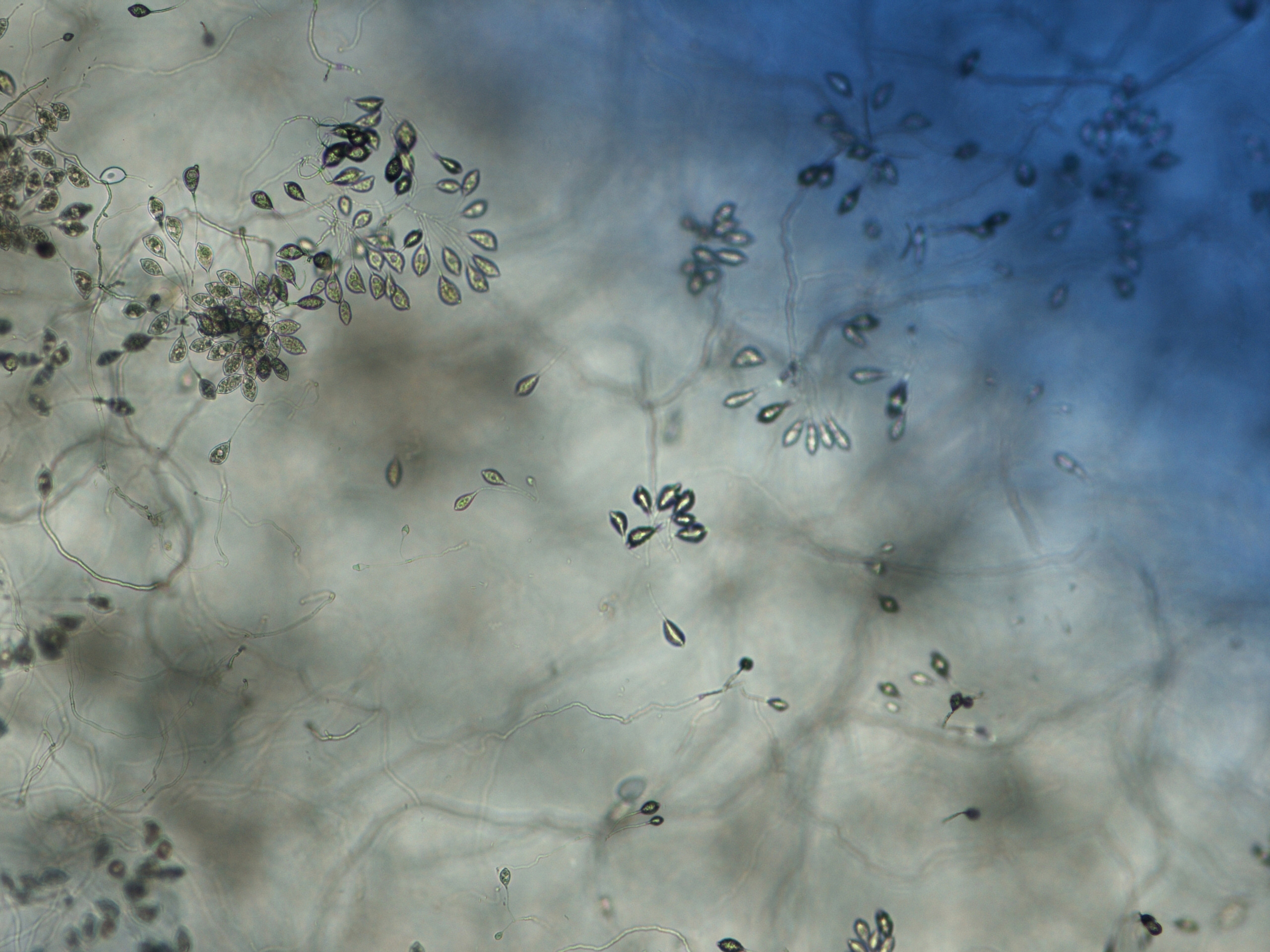 Phytophthora morindae (CPHST BL 49G, ex-type) asexual phase: sporangia produced in umbella type sporangiophores, sporangia papillated; photo by Gloria Abad, USDA-APHIS-PPQ.
Phytophthora morindae (CPHST BL 49G, ex-type) asexual phase: sporangia produced in umbella type sporangiophores, sporangia papillated; photo by Gloria Abad, USDA-APHIS-PPQ.
Phytophthora morindae (CPHST BL 49G, ex-type) asexual phase: sporangia produced in umbella type sporangiophores, sporangia papillated; photo by Gloria Abad, USDA-APHIS-PPQ.
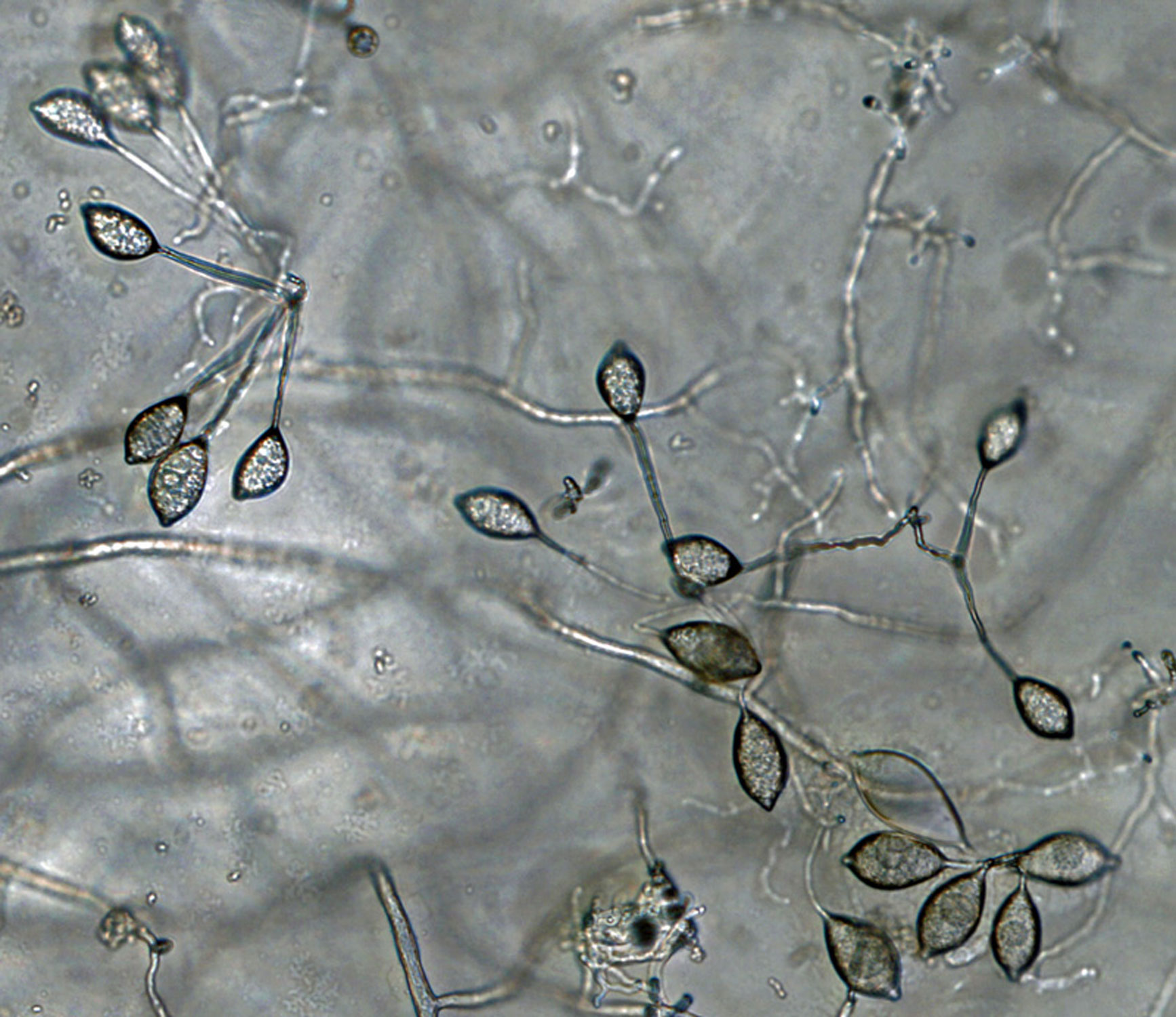 Phytophthora morindae (CPHST BL 49G, ex-type) asexual phase: sporangia produced in umbella type sporangiophores, sporangia papillated; photo by Gloria Abad, USDA-APHIS-PPQ.
Phytophthora morindae (CPHST BL 49G, ex-type) asexual phase: sporangia produced in umbella type sporangiophores, sporangia papillated; photo by Gloria Abad, USDA-APHIS-PPQ.
Phytophthora morindae (CPHST BL 49G, ex-type) asexual phase: sporangia produced in umbella type sporangiophores, sporangia papillated; photo by Gloria Abad, USDA-APHIS-PPQ.
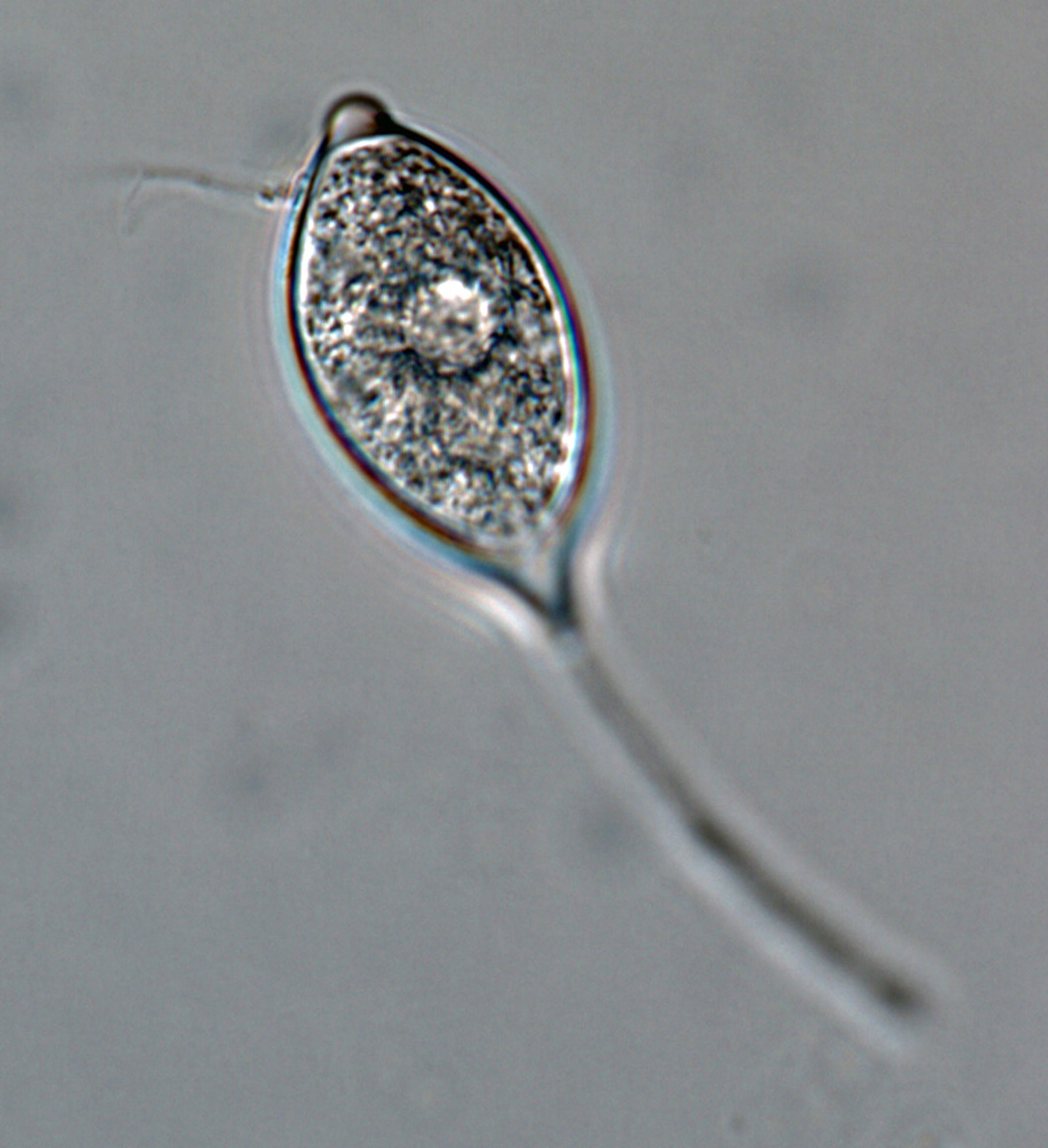 Phytophthora morindae (CPHST BL 49G, ex-type) asexual phase: caducous papillate sporangium with medium pedicel; photo by Gloria Abad, USDA-APHIS-PPQ.
Phytophthora morindae (CPHST BL 49G, ex-type) asexual phase: caducous papillate sporangium with medium pedicel; photo by Gloria Abad, USDA-APHIS-PPQ.
Phytophthora morindae (CPHST BL 49G, ex-type) asexual phase: caducous papillate sporangium with medium pedicel; photo by Gloria Abad, USDA-APHIS-PPQ.
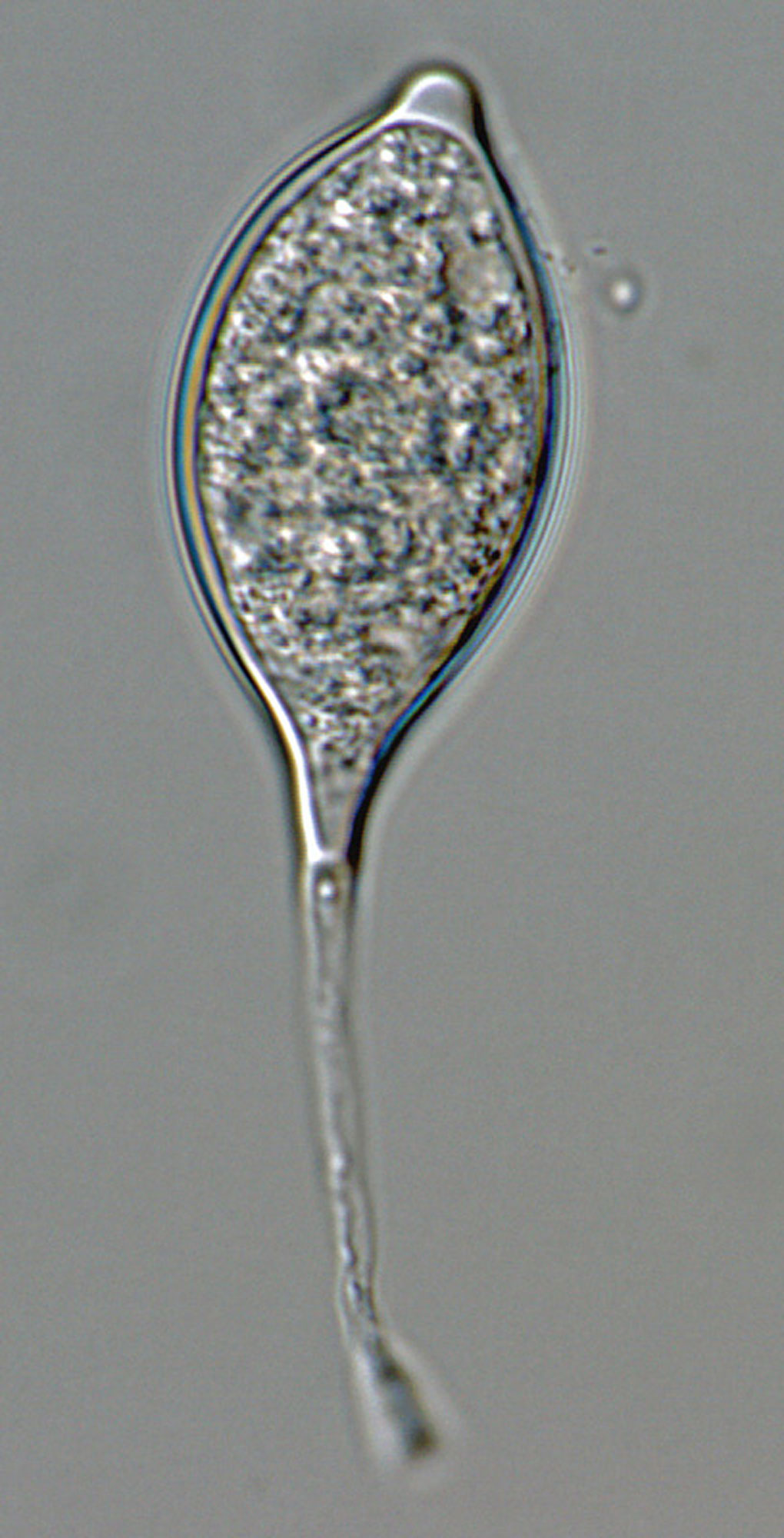 Phytophthora morindae (CPHST BL 49G, ex-type) asexual phase: caducous papillate sporangium with medium pedicel; photo by Gloria Abad, USDA-APHIS-PPQ.
Phytophthora morindae (CPHST BL 49G, ex-type) asexual phase: caducous papillate sporangium with medium pedicel; photo by Gloria Abad, USDA-APHIS-PPQ.
Phytophthora morindae (CPHST BL 49G, ex-type) asexual phase: caducous papillate sporangium with medium pedicel; photo by Gloria Abad, USDA-APHIS-PPQ.
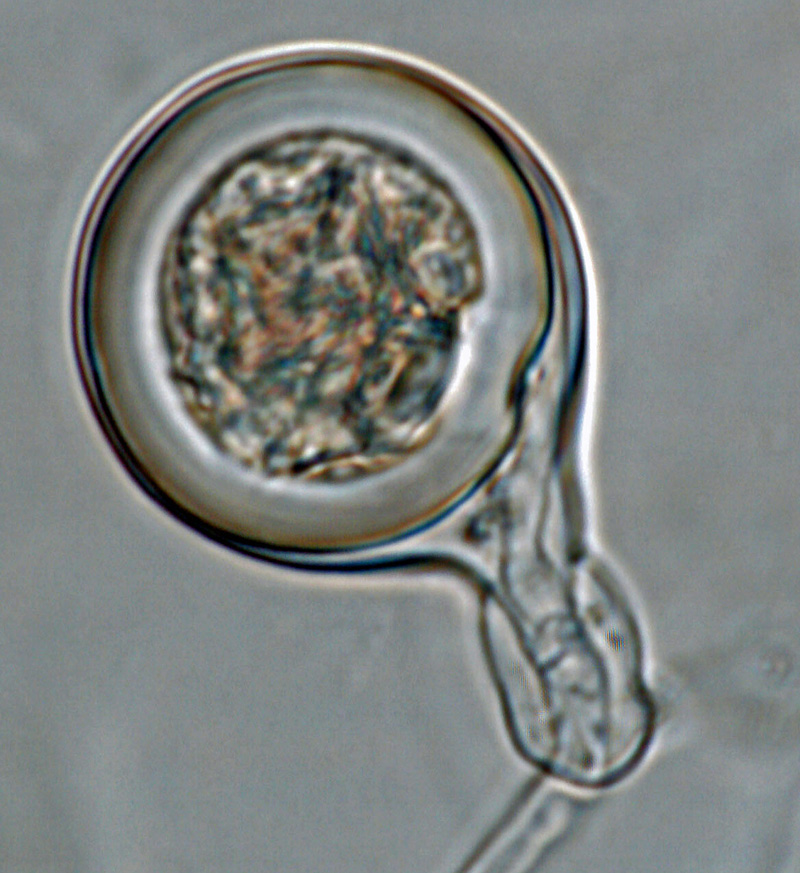 Phytophthora morindae (CPHST BL 49G, ex-type) sexual phase: young plerotic oospore with thick wall, oogonium with tapered base and amphigynous antheridium; photo by Gloria Abad, USDA-APHIS-PPQ.
Phytophthora morindae (CPHST BL 49G, ex-type) sexual phase: young plerotic oospore with thick wall, oogonium with tapered base and amphigynous antheridium; photo by Gloria Abad, USDA-APHIS-PPQ.
Phytophthora morindae (CPHST BL 49G, ex-type) sexual phase: young plerotic oospore with thick wall, oogonium with tapered base and amphigynous antheridium; photo by Gloria Abad, USDA-APHIS-PPQ.
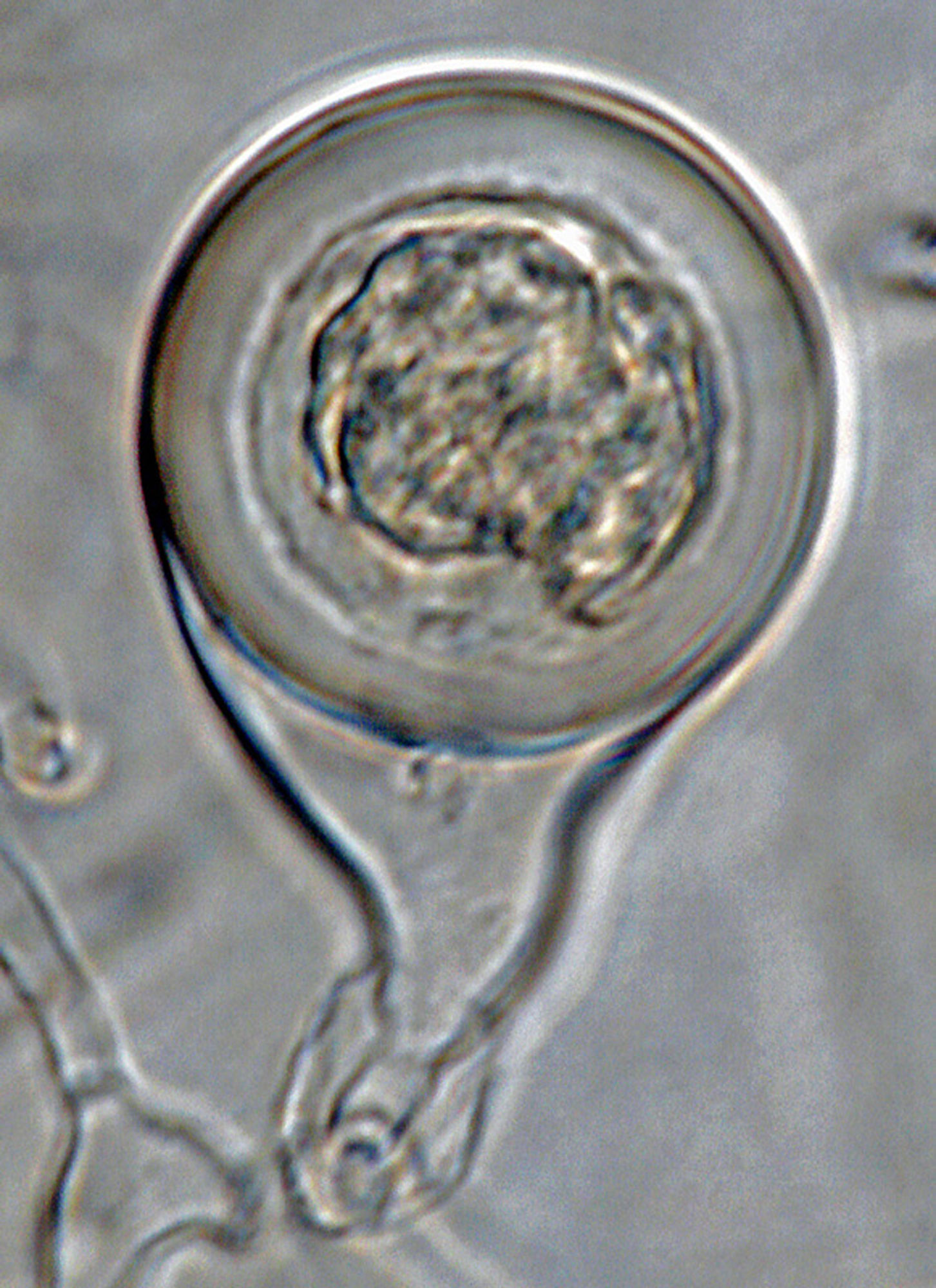 Phytophthora morindae (CPHST BL 49G, ex-type) sexual phase: young plerotic oospore with thick wall, oogonium with tapered base and amphigynous antheridium; photo by Gloria Abad, USDA-APHIS-PPQ.
Phytophthora morindae (CPHST BL 49G, ex-type) sexual phase: young plerotic oospore with thick wall, oogonium with tapered base and amphigynous antheridium; photo by Gloria Abad, USDA-APHIS-PPQ.
Phytophthora morindae (CPHST BL 49G, ex-type) sexual phase: young plerotic oospore with thick wall, oogonium with tapered base and amphigynous antheridium; photo by Gloria Abad, USDA-APHIS-PPQ.
 Phytophthora morindae (CPHST BL 49G, ex-type) sexual phase:nbsp;oospore with thick wall, oogonium with tapered base and amphigynous antheridium; photo by Gloria Abad, USDA-APHIS-PPQ.
Phytophthora morindae (CPHST BL 49G, ex-type) sexual phase:nbsp;oospore with thick wall, oogonium with tapered base and amphigynous antheridium; photo by Gloria Abad, USDA-APHIS-PPQ.
Phytophthora morindae (CPHST BL 49G, ex-type) sexual phase: oospore with thick wall, oogonium with tapered base and amphigynous antheridium; photo by Gloria Abad, USDA-APHIS-PPQ.
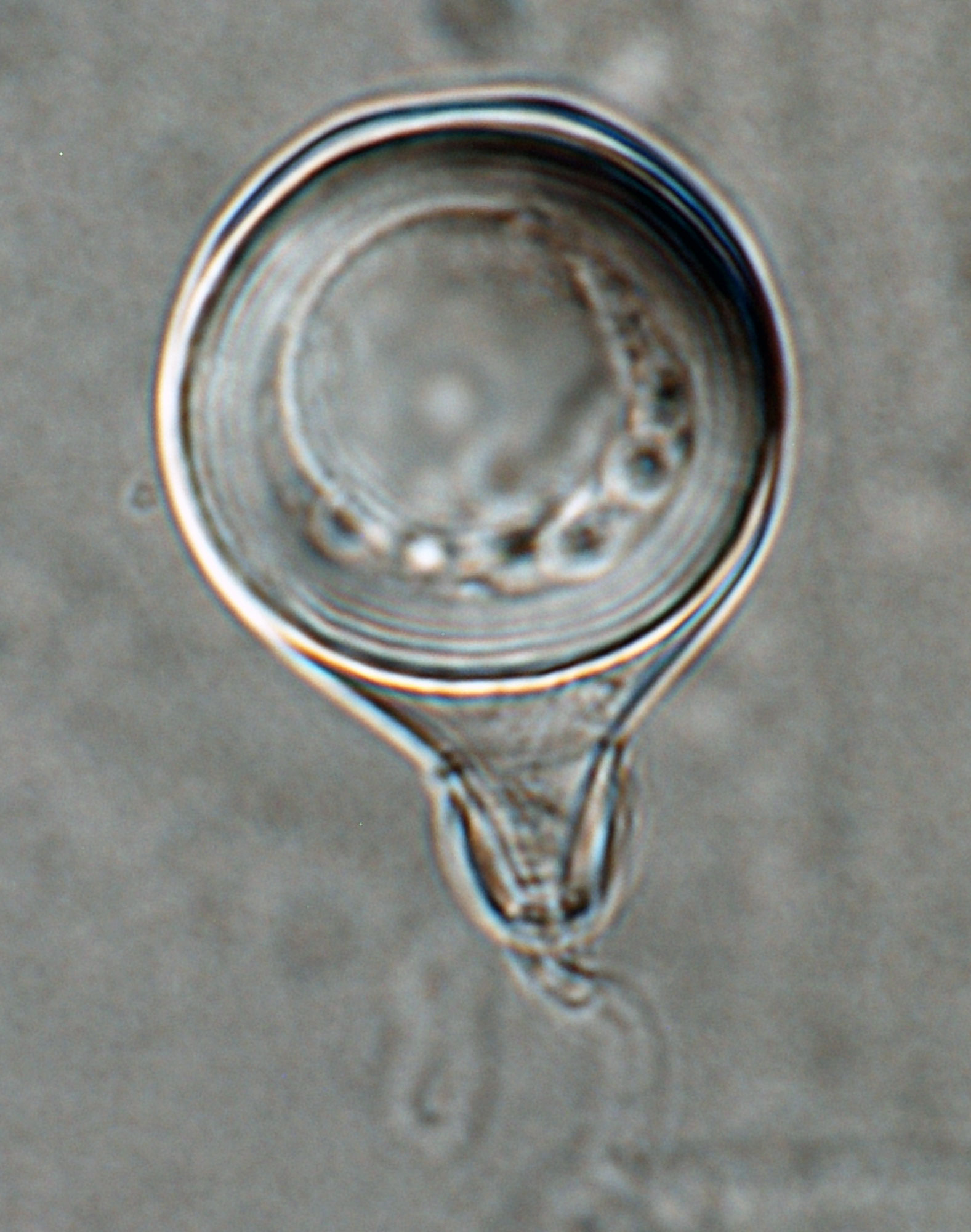 Phytophthora morindae (CPHST BL 49G, ex-type) sexual phase: young plerotic oospore with thick wall, oogonium with tapered base and amphigynous antheridium; photo by Gloria Abad, USDA-APHIS-PPQ.
Phytophthora morindae (CPHST BL 49G, ex-type) sexual phase: young plerotic oospore with thick wall, oogonium with tapered base and amphigynous antheridium; photo by Gloria Abad, USDA-APHIS-PPQ.
Phytophthora morindae (CPHST BL 49G, ex-type) sexual phase: young plerotic oospore with thick wall, oogonium with tapered base and amphigynous antheridium; photo by Gloria Abad, USDA-APHIS-PPQ.
Phytophthora spp. in subclade 6b: portion of the seven-loci ML phylogeny featuring the type cultures of 212 described species (by T. Bourret). Notice the position of P. moyootj Ex-type CBS 138759 = S&T BL 182. Gloria Abad, USDA S&T.
Phytophthora spp. in subclade 6b: Morphological Tabular key (PDF) and Tabular key legends (PDF) in IDphy2 KEY SECTION. Notice the data of P. moyootj Ex-type CBS 138759 = S&T BL 182. Gloria Abad, USDA S&T.

